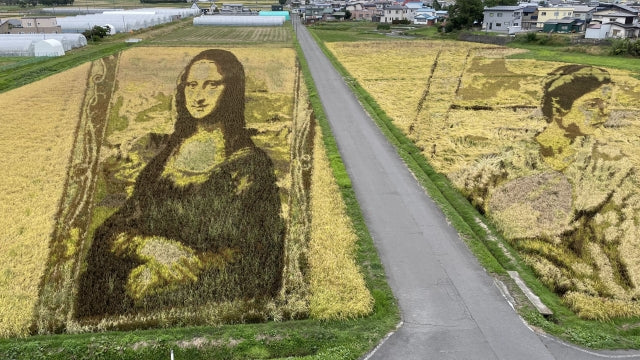

Japanese culture is a treasure trove of artistic expression, from the delicate folds of origami to the serene beauty of a bonsai tree. Yet, among these venerable traditions, a new form of art has emerged that captivates both locals and tourists alike—rice paddy art. This innovative expression transforms ordinary rice fields into breathtaking canvases of living art, drawing eager visitors from around the world.
What is Rice Paddy Art?
Origins and Evolution of Rice Paddy Art
The origins of rice paddy art can be traced back to the small village of Inakadate in Aomori Prefecture. Rooted in the region's rice cultivation history that spans over 2000 years, the village sought a creative solution to combat economic difficulties caused by declining agricultural demand and an aging population. It was here, in the early 1990s, that the idea of rice paddy art was born.
Koichi Hanada, an innovative thinker at Inakadate Town Hall, witnessed children planting rice and envisioned transforming rice paddies into expansive art pieces. Despite initial setbacks due to rudimentary planning techniques, Hanada and his team learned from their experiences and embraced technology to design more accurate and vibrant artworks.
How Rice Paddy Art is Created
Creating these magnificent displays involves meticulous planning and community collaboration. The process begins with conceptualizing the artwork using computer software to ensure precision. Once the design is finalized, markers that represent different colors are strategically placed across the paddy.
The planting phase transforms into a community event where hundreds of villagers volunteer. They plant specific colored rice strains at designated markers, ensuring the realization of the planned image. The resulting canvases boast a spectrum of hues, including white, yellow, red, purple, and green, thanks to ancient upland rice varieties.
Viewing Rice Paddy Art Across Japan
Since its inception in Inakadate, rice paddy art has inspired numerous rural communities across Japan. For those wishing to experience this unique fusion of culture and agriculture, several towns offer stunning displays:
- Asahikawa, Hokkaido Prefecture - Known for its vibrant and imaginative designs set against scenic landscapes.
- Yonezawa, Yamagata Prefecture - Offers a blend of historical themes and modern narratives in their rice paddy illustrations.
- Shibata, Niigata Prefecture - Features intricate designs that capture the essence of local folklore and natural beauty.
- Akitakata, Hiroshima Prefecture - Presents art that celebrates both traditional and contemporary Japanese culture.
- Nagahama, Shiga Prefecture - Designs here often reflect seasonal changes and local festivals, adding layers to the visual storytelling.
The Impact of Rice Paddy Art
Beyond its aesthetic appeal, rice paddy art plays a vital role in revitalizing rural communities. The influx of tourists eager to witness these ephemeral masterpieces boosts local economies and fosters a sense of pride and cooperation among residents.
Additionally, the art form serves as an educational tool, preserving traditional agricultural practices while inspiring future generations to explore innovative uses of their heritage.
Conclusion
Rice paddy art exemplifies the ingenuity and spirit of Japan's rural communities. By transforming fields into vivid tapestries, these regions have not only preserved their cultural legacy but also created a new form of artistic expression that resonates with people worldwide.
If you're planning a visit to Japan, make sure to include a trip to one of these rural art galleries. It's an opportunity to witness the harmonious blend of nature, culture, and creativity in a way that only Japan can offer.



